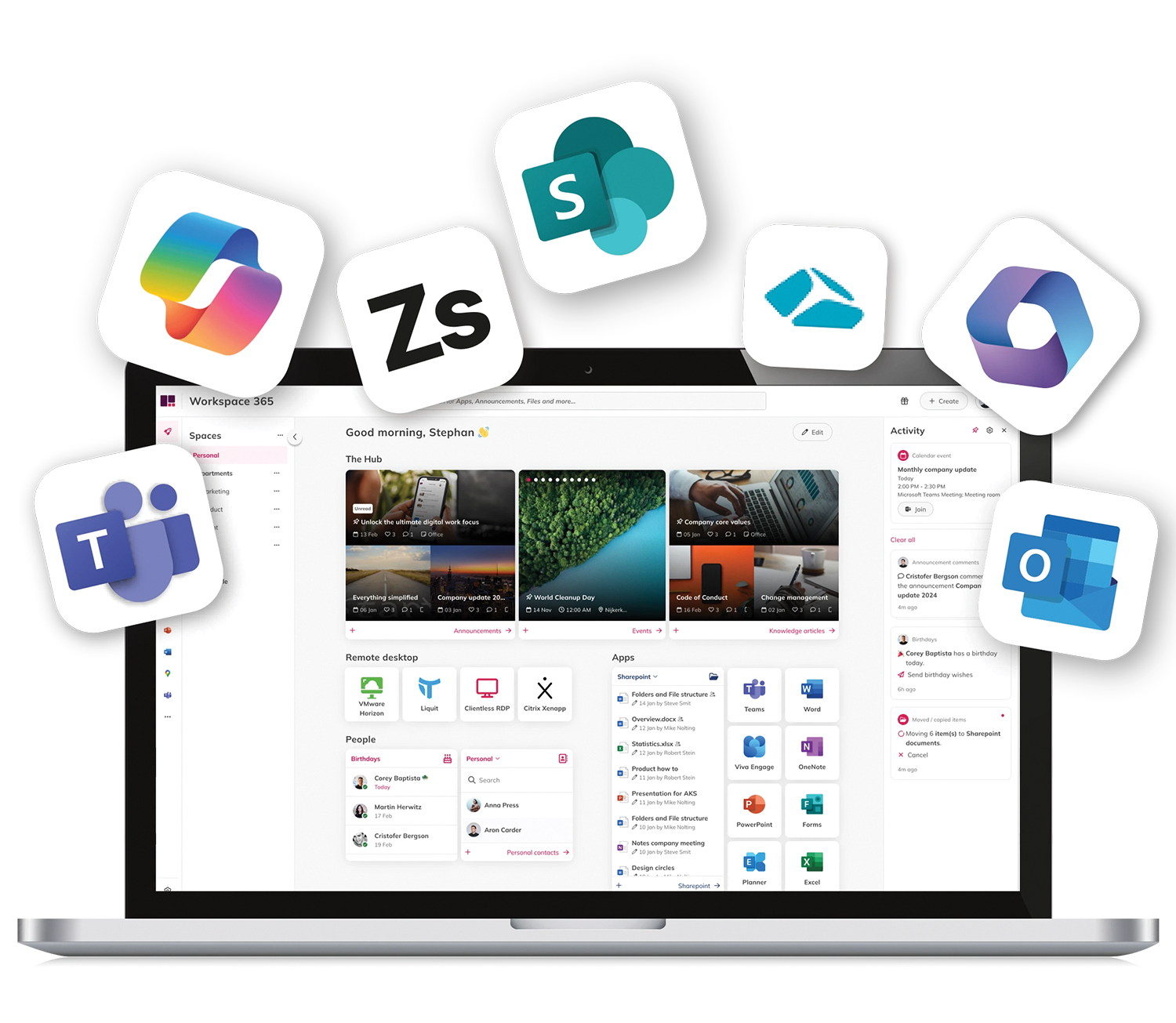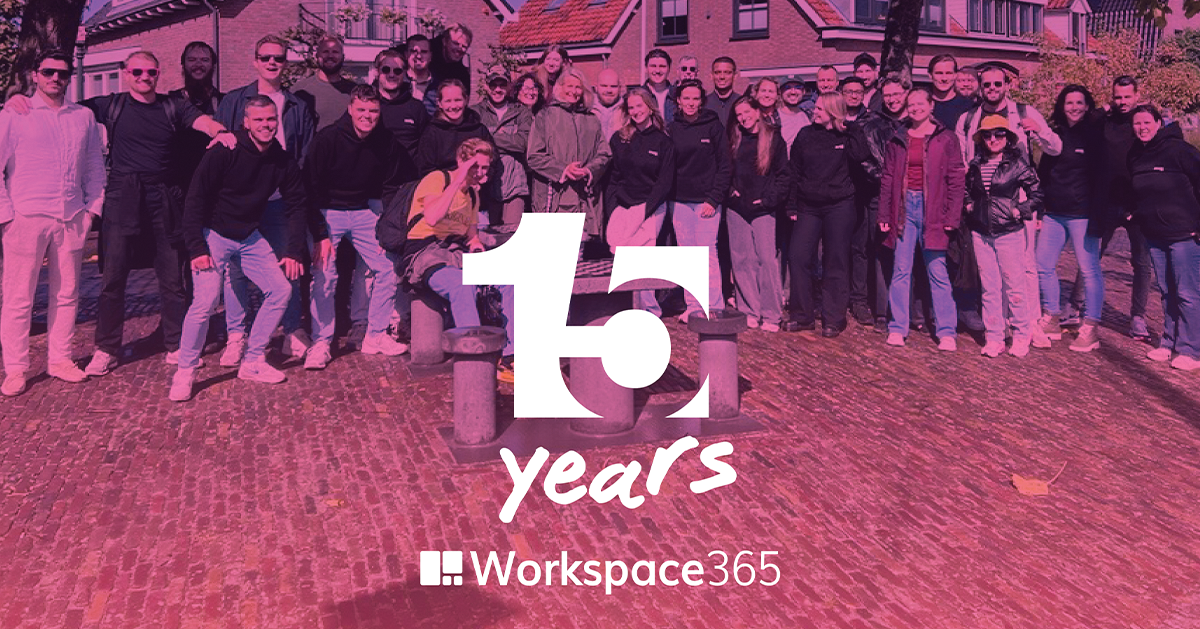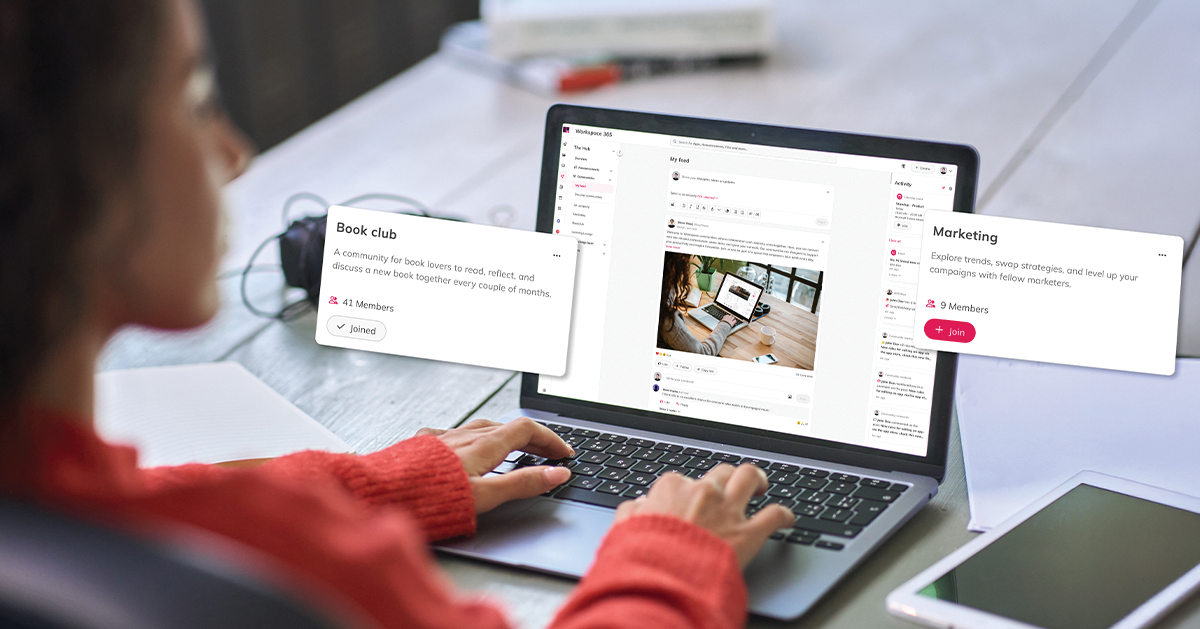Workspace 365 isn't afraid to push boundaries. The organisation's values celebrate those who change the game, rebels who break rules and challenge the conventional wisdom. 2023 sees the business pressing on with a huge scale-up, but to support ambitious plans, a different approach was required.
CEO Erik Nicolai knows his strengths. In the language of the book Rocket Fuel, he's the Visionary and, crucially, he understands the difference between that role and that of the Integrator. Along with Co-founder Hans de Graaf, he began the search for a Head of Company or COO, an individual who could manage all the elements required - the product, people, marketing and finances - and drive the next stage of the company's growth. Erik and Hans looked both internally and externally, but they didn't find an individual. They found two.
Rick van Diermen and Sarah van den Born were already valued colleagues, talented in their own areas of expertise, passionate about the mission of Workspace 365 and committed to supporting Erik and Hans' long-term vision. The question was whether they could work together as joint COOs? Would their individual strengths prove complementary, or would there be disagreements, conflicts and responsibilities that fell through the gaps?
Erik thought it could work. Hans agreed. The next logical step was to try it. Workspace 365 now has two COOs. And although when interviewed, Rick described his co-COO as a sparring partner, both he and Sarah recommend the approach.
As for the scale up. It's on track and the vision is being delivered.
Let's hear more from Rick and Sarah. You should know that is an edited version of their responses. While very different people, they often gave very similar answers to our questions.
Co-COOs in practice. Making it work
How are the responsibilities split?
Rick says it was a deliberate choice not to split responsibilities by department but along lines that reflected his and Sarah's expertise. Sarah is the people person, Rick's focus is process oriented, analytical and financial. Every aspect of the operation is covered by that simple distinction, and it's how they make the final call if ever they disagree.
Are there disagreements?
Sometimes, but less often than you might expect. Rick points out that the way responsibilities are split can cause some intense situations, but as Sarah says, they find ways to make it work. If they can't agree, there's a right to veto decisions based on the people, process, or finance split.
Would Rick and Sarah recommend this approach?
Sarah answered this with a resounding YES - her capitals - and pointed out that other organisations are choosing this model. While not the norm, it's a practice that's gaining traction. As Sarah says, it's hard to find one individual with all the qualities needed in a COO. Naturally people are stronger in some areas than others, but their weaknesses could leave an organisation exposed.
Rick agreed but added, "Having a sparring partner with a different view is the most valuable thing I can have. It opens my eyes to a lot of things."
And if they moved on From Workspace 365, would they choose to manage this way again? For Rick, it's a definite yes. Sarah is slightly more cautious, but as she says, right now, it's early days.
How does it work day to day?
Rick summed this up in just four words: we discuss a lot.
In practical terms that can mean calls at the start and end of every day. They share information, talk about actions required and reflect on what could have been done differently. Rick was keen to stress that they don't simply natter away but keep things productive. Even when there's a big topic requiring their joint attention, they use their time efficiently.
How is this model helping the scale-up?
Both Rick and Sarah answered with a variation of the adage that many hands make light work. It's a fast-moving scale-up with multiple tasks and challenges. Often there's no current 'standard' and one must be developed as quickly as possible. The workload is demanding but having two pairs of hands helps conserve energy.
Rick believes the way he and Sarah are working is evolving. At first they were keen to make sure they were on the same page with every step. Now, as their trust and understanding has grown, remaining on the same page has become more organic. It's allowing the scale-up to progress even faster.
Finding the right sparring partner
The benefits of a sparring partner in business have been long understood, but to have that in the form of a Co-COO is proving a game changer for Workspace 365. But for the Co-COO model to work in practice, making the right choice is critical.
In this case, Erik and Hans already knew the capabilities of their colleagues, and what's more, they would both be available to advise on any issues that arose. Rick and Sarah clearly respected the other's strengths. They knew there would be challenging situations but were prepared to make it work. Everything was in place for success, but in life there are no guarantees.
What then made the difference? What makes the right sparring partner? We'll let Rick answer that one:
"It's quite challenging to find people who have the opposite views but the same vision. I think that is the thing that makes it work so well between me and Sarah."
In short: spar but work towards the same goal.








